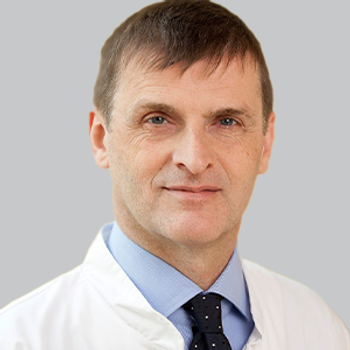
Diagnosis of Narcolepsy
Michael J. Thorpy, MD: It can be quite difficult to make the diagnosis of narcolepsy, can’t it, Eveline? What causes an underdiagnosis of narcolepsy and a delay in patients getting diagnosed with the condition?
Eveline Honig, MD, MPH: I think there are many reasons for this. One of them is the misunderstanding in the general community—but even in the community of physicians, pediatricians. People don’t really know what it is. I’ve spoken to groups of school nurses, guidance counselors, school principals. They know what narcolepsy is, but they say, “Oh, isn’t that when somebody is very sleepy?” So there’s still a lot of misunderstanding. I think even in medical schools, none of us really learned what narcolepsy was, aside from maybe reading a little paragraph about it in a neurology book.
But seeing a patient with narcolepsy and having this whole group of symptoms is just something that we don’t really connect. It’s a group of symptoms that’s not always so easy to diagnose. It’s not like, “My leg hurts,” or “I fell and my wrist hurts.” It’s something where people are sleepy. Very often, they’re diagnosed in their community as lazy. Or people say, “Oh, sleepy. Yeah, I have that, too. We all have sleepiness.” That’s something that all of them hear. So they already feel there’s a little barrier to going to the doctor and saying, “I’m tired” or “I’m sleepy.”
They, oftentimes, don’t connect that maybe they’re experiencing cataplexy. And it doesn’t have to be falling down all the way, but just the head, maybe, a little bit. But it’s not something they connect with a syndrome or disorder. And the hallucinations, again, are something that gets associated with people with psychosis. So, people don’t really want to talk about it.
So it’s very difficult for someone—if they already go to their doctor—to talk about all the things they have going on. And then if doctors don’t know what narcolepsy is, they don’t ask, “Do you fall down when you feel emotional? Do you feel weakness in your knees, maybe? Do you have crazy dreams? Do you have scary dreams?” That’s not something that people ask, generally, let alone in a school community. School nurses don’t think about narcolepsy. It’s a word they know, but they may not understand what it really is.
Michael J. Thorpy, MD: And even if they do recognize the tiredness and sleepiness, sometimes patients still get misdiagnosed. How about in children, Kiran? What are some of the misdiagnoses for narcolepsy in children?
Kiran Maski, MD, MPH: That’s a good question. ADHD [attention-deficit/hyperactivity disorder] would be a common one. The ADHD population, in particular, is oftentimes treated with stimulants, so there is some partial improvement in the symptoms—so the diagnosis is even further confounded. In the teenaged population, I oftentimes see them coming in with primary depression as the cause of their fatigue, or sleepiness, or vivid dreams. And then, epilepsy. Oftentimes, the cataplexy could be misdiagnosed as seizures or atonic seizures. Patients are put on medications inappropriately.
Michael J. Thorpy, MD: And in the adults, Alon, what’s being misdiagnosed?
Alon Y. Avidan, MD, MPH: Just to add to what Kiran mentioned, in children you can sometimes see REM [rapid eye movement] without atonia or REM sleep behavior disorder [RBD] on the polysomnogram even before the onset of daytime sleepiness. You have to watch for the development of daytime sleepiness later on. But there are few reports of RBD in the pediatric population as a manifestation of early narcolepsy.
Kiran Maski, MD, MPH: Yeah, it’s very interesting.
Alon Y. Avidan, MD, MPH: It is interesting. Again, talking about the dysregulation of rapid eye movement sleep, which both RBD and narcolepsy share, I do want to mention 1 interesting anecdote. I saw, a few years ago, a young girl from Southern California who actually presented with episodes where she fell to the ground, and she had these spells every time she hit the soccer ball and got really excited. She went to see 2 physicians—her family physician and then a psychiatrist—both of whom, unfortunately, did not make the diagnosis of narcolepsy but felt that this was a psychosomatic sort of reaction to some underlying family dynamics.
And interestingly, she was placed on an antidepressant, which actually worked for the cataplexy—but for the wrong reason. So again, it speaks to how the under-recognition of the key symptoms often is a barrier for making the appropriate diagnosis. And there is almost a 10-year delay from the onset of the disease to when someone eventually makes the correct diagnosis. And it is, in fact, a pediatric condition, isn’t it? And oftentimes, we have an opportunity to make a diagnosis.
Some other symptoms that are often misdiagnosed in adults, I would second what was already said about attention-deficit/hyperactivity disorder. Occasionally, though, we see individuals who are labeled as having depression or some sort of an irregular or underlying sleep deprivation without really recognizing that there is a little bit more to that. And I think the labeling issue is a huge problem, in that we often inherit patients who were given a diagnosis—sometimes correctly, sometimes incorrectly. And it speaks to the fact that we often have to validate every time we see this patient who is labeled as having a certain hyperactivity disorder or depression—to just go back and re-review the symptoms to make sure we’re not missing the diagnosis of narcolepsy.
Michael J. Thorpy, MD: How about obstructive sleep apnea? It’s such a common disorder. Can that be a problem with regard to a diagnosis of narcolepsy?
Alon Y. Avidan, MD, MPH: Definitely. In fact, obstructive sleep apnea can present with symptoms similar to narcolepsy. And, in fact, when you do the test for narcolepsy, many individuals with untreated or suboptimally treated sleep apnea may have the same markers of disease severity that you see in narcolepsy. And certainly, the complication is that 10% to 60% of patients who have treated sleep apnea are still very, very sleepy, to the point of sometimes having an underlying comorbid narcolepsy—type 1 or type 2—which often complicates the picture.
Newsletter
Keep your finger on the pulse of neurology—subscribe to NeurologyLive for expert interviews, new data, and breakthrough treatment updates.









































